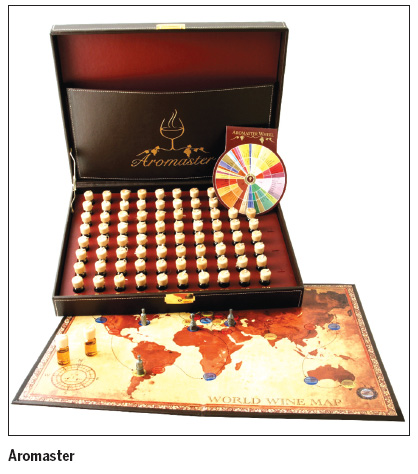Crash course for your wine palate and nose
Updated: 2010-04-17 07:47
By MAGGIE BEALE(HK Edition)
|
|||||||||

To hold your own when tasting wines with friends or at a wine tasting, your best preparation involves a little groundwork. First impressions count, so be prepared to recognize the colors of wines, in general, light whites are very pale lemon-yellow, medium weight whites are more golden-yellow, heavy reds are dark red, and so on - it's just common sense. Clarity is important: brilliant, cloudy, hazy, lifeless and inert, or transparent. Young(er) wines will have a very transparent edge, and when the rim is reddish brown, it's an older wine and probably well aged.
The part that defeats untrained palates is distinguishing the aromas - they herald the tastes. To train your nose and palate, put a few of these items out in dishes so that you can identify them by smell. The underlined words are common identifiers used by professionals.
Vegetative: tea, tobacco/asparagus, green beans, artichokes, olives/mint, eucalyptus, capsicums, cut grass.
Spice: cloves, cinnamon, black pepper, fenugreek, anise, zest - orange and lemon.
Dried Fruit: jam, prunes, raisins, apricots.
Fruit: strawberry, raspberry, blackberry, cherry, peach, apple, pineapple, guava, banana.
Nuts: almonds, walnuts, hazelnuts
Woody: vanilla, mushrooms, burnt toast, oak, espresso coffee
Caramelized: chocolate, soya sauce, butterscotch, honey.
You will easily find coffee, tobacco and chocolate; the other categories may take a little time. When your nose gets tired, take a rest or smell your own forearm before testing again. Of course there are other aromas in wines; there are chemical smells such as sulphur which you will recognize from garlic, cabbage, burnt matches, rubber, and pungent smells of ethanol and acetic acid (vinegar).
The more you expose your nose to the aromas in a glass, the more you will get from the wine when it is time to taste it.
If you want the professional approach to learning wine, try the Aromaster. This goodie box contains 80 different aromas found in sparkling, sweet, red and white wines from warm and cold climates. It also includes the 10 most common wine fault aromas from "corked" to "oxidized" and "badly stored" to "kept too long in hot conditions". The set comes in a case with 80 phials of aromas, a Wine Aroma Wheel (to assist in blind tastings) and an introduction to the aromas of the most common grapes.
The aromas are natural, obtained by extraction and aromas reproduced chemically, and can last for years if the bottles are closed properly after use.
Apart from all that, Aromaster is also a great Board Game for 4 players. It comes with a manual in French and English.
The Aromaster manual is available in 8 different languages (Chinese, English, Japanese, Portuguese, Spanish, German, Italian, and French). It explains how to smell wines and train your nose, how to organize a wine tasting and how wine aroma faults can occur. The Aromaster costs HK$2,100 per set, and for maximum value it can't be beat.
As interest in wines continues to grow it makes sense to be prepared!
Maggie Beale can be contacted at:
wine-expert@hotmail.com
(HK Edition 04/17/2010 page4)